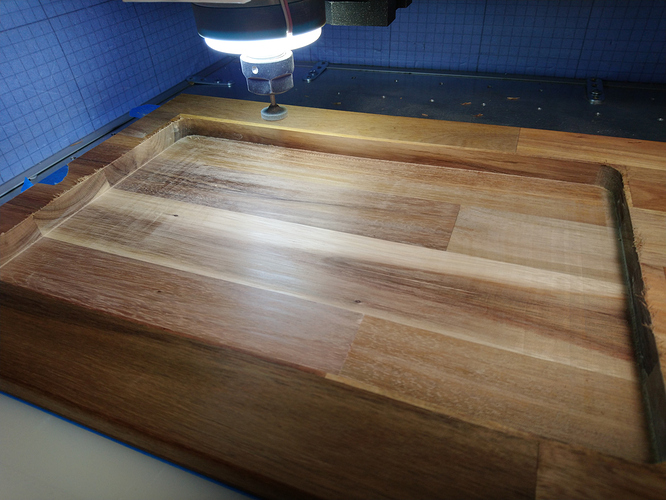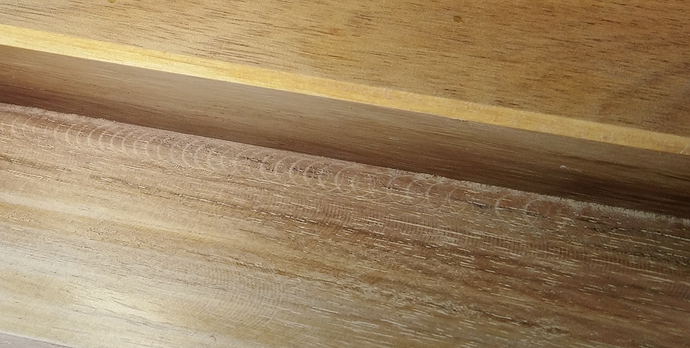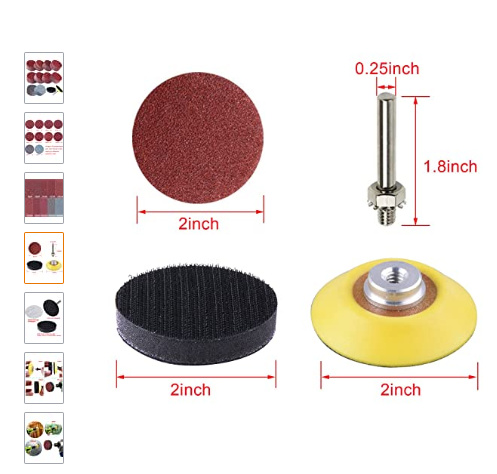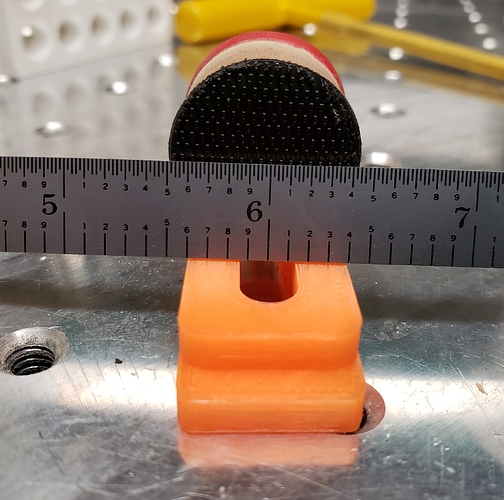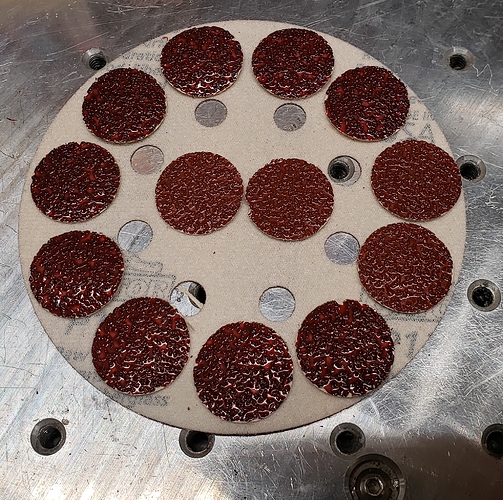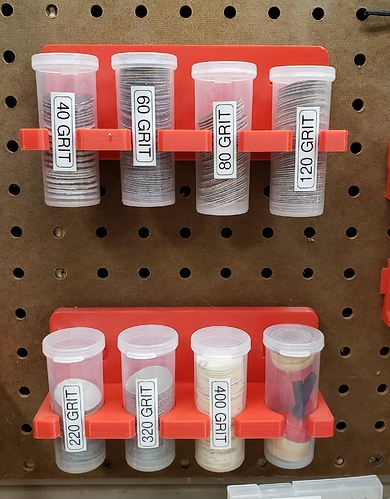I have been wanting to experiment with this for a while, and I could not find anything on the forum. I’m not a big fan of manual sanding, so I figured I would try and use one of those tiny sanding discs that come with Dremels, which conveniently have a 1/8" shaft, and glue a 180 grit sanding disc on that:
Here’s my guinea pig for today: a large tray, as it stood after the clearing path + one contour finishing pass on the walls. You can see the circular marks of the clearing toolpaths at the bottom of the pocket (which may or may not be reduced if I re-trammed by spindle, that’s not the point here)
Since I had this idea after cutting the pocket and the zero was on top surface (so…gone), the first step was to probe the endmill I had used on the BitSetter, and then probe this sanding disc to adjust zero:
I created a tool in Fusion, the size of my sanding disc, and generated a ~0 depth pocket at the bottom of the cut:
(the funky-looking curves are because I enabled “Used Morphed spiral machining” to see what it does, and forgot to turn it back off)
I had absolutely no idea what RPM and feedrate to use, so I went for slow & slow: 1000RPM, 30ipm
A few videos:
This left me with a “meh…” result: the bottom does feel silky smooth, but now there are marks of the sanding disc instead of endmill marks
And during the last segment of the toolpath something must have gotten stuck under the sanding disc and I made those spiral scratches:
Also captured live:
(do that collet nut and sanding tool feel too close to the wall for comfort ?  )
)
Conclusions for today:
- I want to find a way to make this work, it just sounds too convenient to overlook.
- using a fixed-shaft sanding disc mounted in the collet was a bit risky: any residual variation in stock material depth could have meant trouble. Since this came right after a pocketing pass, that was a low risk in this case. BUT, now I want to find a spring-loaded holder that could accomodate a small sanding tool AND support spinning at a few hundred/thousand RPMs. There was an interesting thread the other day about such a holder, but I can’t find it again. If anyone has links to share, that would be great!
- then I’ll have to figure out the optimal sanding disc grit + RPM + feedrate, and see if I can make Fusion generate more “sanding friendly” toolpaths doing overlapping circular sweeps across a surface. Sounds like another rabbit hole.



